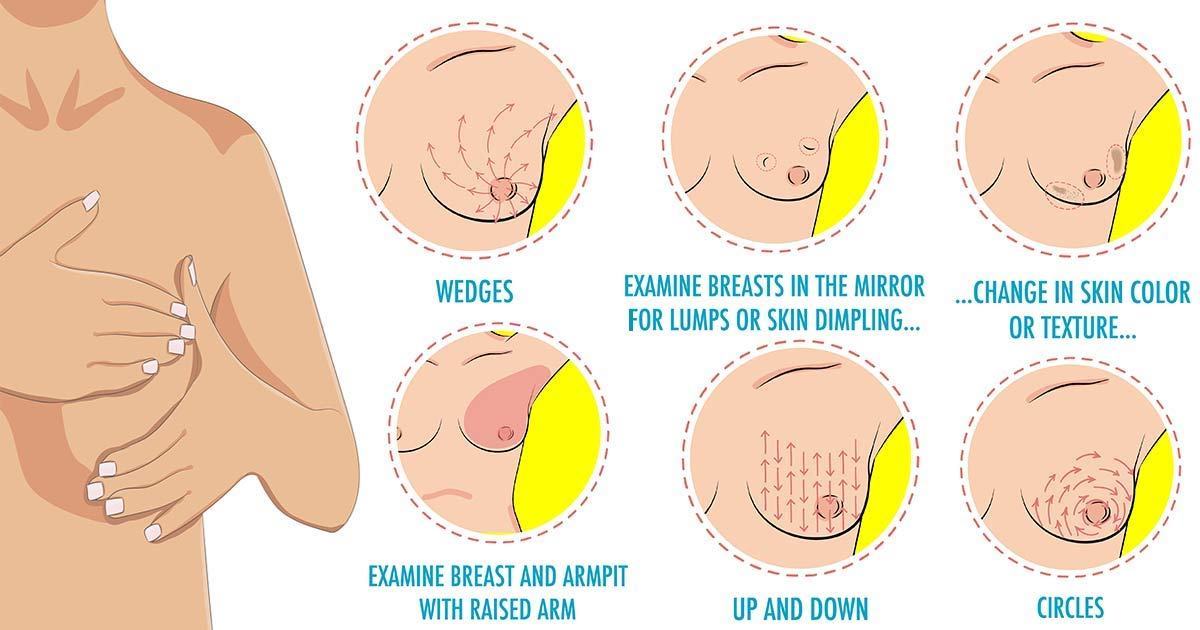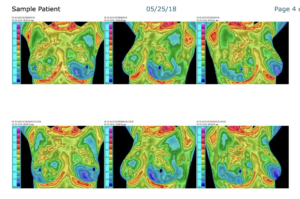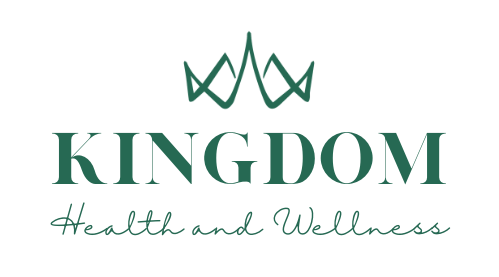[vc_row][vc_column width=”1/6″][/vc_column][vc_column width=”2/3″][vc_column_text]Excluding basal cell and squamous cell skin cancers, breast cancer is the most commonly diagnosed cancer among women in the U.S. In 2021, there will be an estimated 281,550* new cases of invasive breast cancer diagnosed in women. That is 1 in 8 women.
This CAN change if we DO something about it.
Let’s start by talking about female health.[/vc_column_text][vc_video link=”https://youtu.be/CKQn2_9Pf-Y” align=”center”][vc_column_text]
Breast Health
There are things we can do to support our breast health and prevent cancer from developing.
Examinations & Assessments
The first thing we can do is monthly breast exams – YOU KNOW YOUR BODY BEST!
 [/vc_column_text][vc_column_text]Another way to exam your breasts is through #thermography.
[/vc_column_text][vc_column_text]Another way to exam your breasts is through #thermography.
Without the low-dose radiation and breast compression that come with mammography, A thermography machine uses an infrared camera to detect temperature differences within your breast tissue. During a thermogram screening, the machine never touches your body.
 On a thermogram image, “hot spots” appear red compared to surrounding tissue that appears yellow, green or blue. Anything that is causing an inflammatory response from the body will show up on a thermogram image as hot.
On a thermogram image, “hot spots” appear red compared to surrounding tissue that appears yellow, green or blue. Anything that is causing an inflammatory response from the body will show up on a thermogram image as hot.
Currently, there are no quality standards for thermography. In fact, the FDA has stated explicitly that thermography should not be used in place of other screening tools like mammography to detect breast cancer or any other disease. We encourage our members & patients to trust their instincts first and foremost and use an integration of the tools we have been provided with full awareness of the pros & cons of each.[/vc_column_text][vc_single_image image=”1926″ img_size=”full” alignment=”center”][vc_column_text]
Ditch the wire!
Starting from adolescence, girls and women are bombarded with the message that sexiness requires push up bras, boosting cleavage, and making our breasts look and feel as unnatural as possible. However, with the rise of the bralette, the standard for beauty is shifting and focusing more on natural beauty and comfort, and in turn, better health as well.
Another way you can support your breasts health is by ditching the underwire in bras and getting rid of any bra that cuts off lymphatic flow.
Holistic health pioneer Dr. Joseph Mercola and other documented studies warn that restrictive bra usage may be correlated with increased breast cancer risk. When worn all the time, underwire bras can prevent the drainage of lymph fluid from the lymph nodes, which are along the breast bone and by the arm pits. Without adequate flow of lymph fluid, our bodies cannot properly get rid of toxins, which may contribute to a higher risk of cancer. Wirefree bras do not contain the hard metal lining that sits beneath the breasts and constricts the flow of lymph fluid. Allow your body to detox as it should by taking your underwire bra off as soon as you get home from a long day at work and wearing a wireless bra more often.

 [/vc_column_text][vc_single_image image=”1927″ img_size=”full” alignment=”center”][vc_column_text]
[/vc_column_text][vc_single_image image=”1927″ img_size=”full” alignment=”center”][vc_column_text]
Choose non-toxic deodorant.
The aluminum found in many deodorants could contribute to diseases such as breast cancer and Alzheimer’s. Consider more natural options instead!
Aluminum is the active ingredient in most antiperspirants, and it functions by forming a precipitate that physically blocks sweat glands (1).
Do you really absorb aluminum from your deodorant?
A case study of a woman who had used an aluminum-containing antiperspirant for 4 years had toxic blood levels of aluminum, which resolved 8 months after discontinuing use of the antiperspirant (2). Her symptoms of severe bone pain and fatigue also ceased.
Aluminum is also regularly detected in both normal and cancerous breast tissue (3). This suggests that aluminum indeed can be absorbed by the skin as well as into the breast tissue.
We know that estrogen plays a key role in the development of breast cancer, and one study demonstrated that aluminum can interact with estrogen receptors on human breast cancer cells (4). Additional preliminary research indicates that aluminum might promote breast cancer growth in other ways as well, though more research is needed before any conclusions can be drawn (5,6).
Human mammary epithelial cells grown in media with aluminum concentrations around 100-300µm (which is around 100,000 times lower than aluminum concentrations in antiperspirants, and comparable to aluminum concentrations found in breast tissue), resulted in DNA double strand breaks and loss of contact inhibition, two occurrences that often precede cancer (7). Aluminum might also contribute to oxidative damage in breast tissue and increase breast cancer cells’ invasive and migratory tendencies (8).
What to Use Instead?
When you can, go deodorant fee!
Or, try using one of these products instead:
There are also lots of more conventional “aluminum-free” deodorants on the market right now if these traditional options do not work for you & your lifestyle.
Be aware that these deodorants tend to be antiperspirant – and your body needs to perspire! Also, deodorants made with “crystals” are referring to magnesium alum, which is a compound made up of aluminum sulfate bonded to either potassium or ammonium (plus a bunch of water molecules). On the one hand, this compound is larger than the aluminum compounds found in conventional deodorant, and is therefore unlikely to be absorbed through the skin, but I haven’t been able to find any actual data on dermal absorption of alum. So while crystal deodorants are a better choice than conventional deodorants, you might be better off forgoing aluminum altogether and trying a baking soda or clay-based deodorant.[/vc_column_text][vc_single_image image=”1928″ img_size=”full” alignment=”center”][vc_column_text]
Female Hygiene Products
It’s time to talk about tampons.
Tampons (and pads) are made from cotton.
A Roundup Of Cotton Pesticide Statistics
As a quick reference, here is a selection of cotton pesticide statistics from quality sources:
- Cotton consumes a staggering 16% of all the insecticides sold worldwide.
- In developing countries , around 50% of all pesticides used are for cotton cultivation.
- Conventional cotton is the fourth-largest consumer of chemicals for agricultural use.
- Over one thousand different chemicals have been used as pesticides.
- Glyphosate is used on about 80% of genetically modified crops.
- Insecticide use has declined in Australia by 89% over the past two decades.
- Occupational poisoning levels are high with as many as 42% of farmers reporting signs and symptoms of pesticide poisoning.
- A study of six Central American countries found “only between 1% and 20% of the cases of acute pesticide poisoning are officially reported.”
- A study in India , undertaken as part of the FAO IPM programme in 2003, identified 383 occurrences of cotton pesticide poisoning in three villages, with 10% of those people experiencing a severe neurological disorder.
- A study showed that washing protective clothing worn by workers during the use of pesticides did not remove cotton pesticide residue, even with six washes, with between 1 and 42% remaining.
When we insert tampons, we are putting these toxins on our cervix each month.
Time to Un-plug
Tampons are essentially a plug that prevents your body from shedding everything it needs to. By interfering with this natural elimination process, the waste builds up and is either re-absorbed by the body and/or can lead to cramping, cysts, endometriosis, and other period “symptoms.”
Better Options for Us & the Earth
Thankfully, there are a growing number of companies on a mission to make better feminine hygiene products. There are tons of other options that are more sustainable and less toxic than your run-of-the-mill pads and tampons.
Yes, they even make period pants now!
With all the options out there now created by women who care about women, take a deep breath and have fun exploring what works best for you![/vc_column_text][vc_column_text]We know this can be a lot of changes at once – just remember, it starts with your mindset. If you WANT to do something different so 1 in 8 does not continue (or worse, become 1 in 4… 1 in 3… 1 in 2…). If you want to teach your children and those around you how to help the body and prevent this toxic cycle, start small and watch the wonders of God’s healing powers!
Don’t give up – we are here for you every step of the way.[/vc_column_text][/vc_column][vc_column width=”1/6″][/vc_column][/vc_row]




